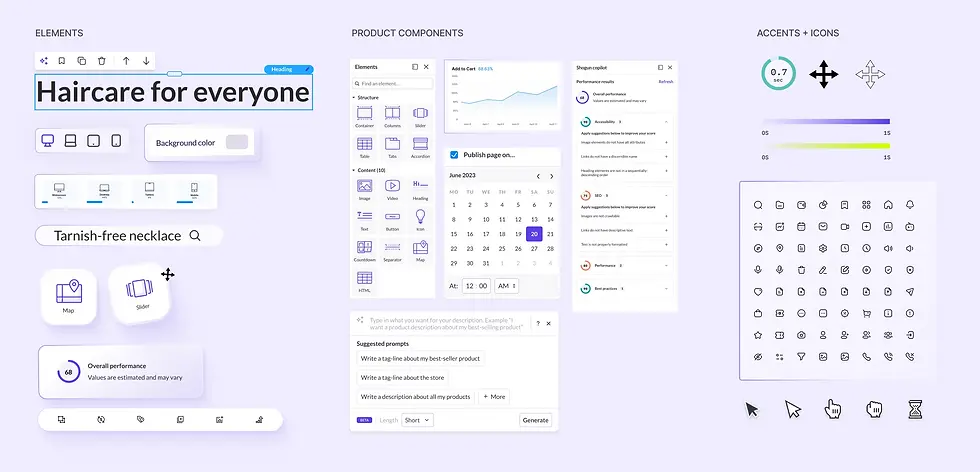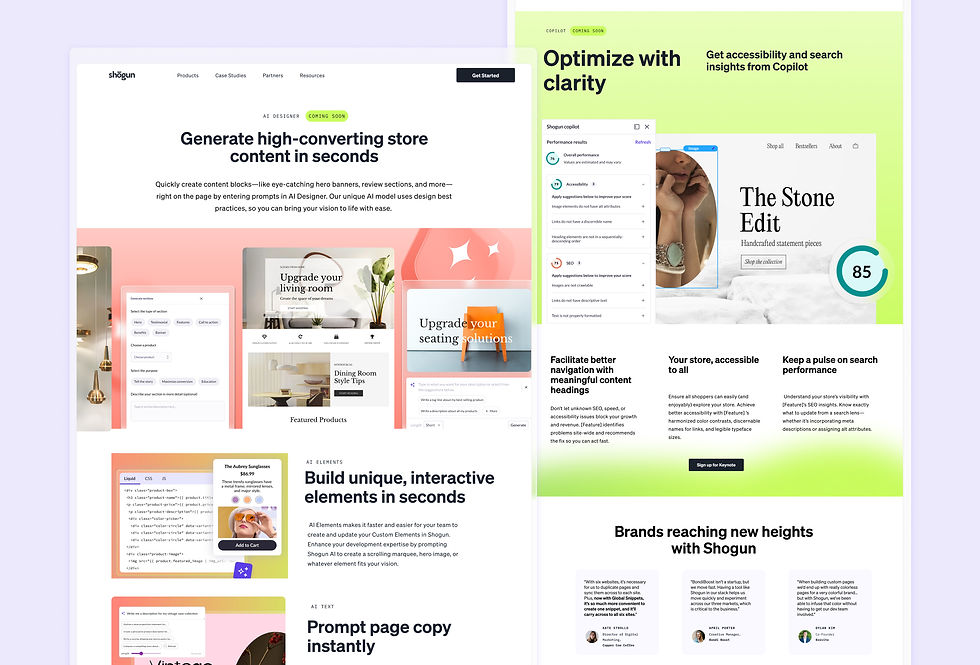Shogun Design
Sr. Manager, Design
Design Strategy
Website and Brand Design
UX + UI
Art Direction
Shogun is a no-code, drag and drop page building platform for online storefronts. It enables merchants to create richer, more immersive shopping experiences with low technical overhead. During my time at Shogun, I led the Marketing and Product design teams and collaborated with leaders across the organization to bring design strategy and value to decision making spaces.

Building a scaleable marketing brand
The Shogun brand initially focused on a fun, illustrative style that captured a variety of product concepts. With the move upmarket, it was imperative for the brand team to define what exceptional ecommerce experiences meant to our users, and how that translated across the digital landscape. We had 3 key value pillars that grounded our visual strategy:
It was integral for the design team to have this new approach be scalable. The goal was to create building blocks where we codified each element enough that there was streamlining but not too much that the output looked repetitive. We ended up with an efficient system that enabled the team to create tangible environments to show off ecommerce experiences and the product UI.
.webp)
.webp)
.webp)
.webp)
.webp)

Replatforming and scaling the website
One of the largest projects during my time at Shogun was replatforming the marketing website from Webflow to Wordpress. The core driver behind this was to enable the entire Marketing team to quickly build and launch pages, with low technical overhead. Keeping things decentralized also empowered the content creators to test and adjust strategy quickly. I worked closely with the Content and Demand teams to understand their needs, and what their vision for a larger, more iterative model would look like.
The first order of business was auditing the various modules on the site to see what we could condense and streamline - but in a way that still gave the team freedom to build dynamic pages that didn't look overly templated. This led us to a final list of modules (with variants) that could be built on Wordpress, and covered all the current and future pages that the team wanted to launch.
Impact
With the new marketing brand system, the team was able to increase operational efficiency of design asks through centralized asset management and codified elements. There was also a quick turnaround on product and PMM requests, with clearer visual storytelling on brand collateral through updated product and ecommerce imagery.
Creating example brands that reflected our merchants
Developing a set of 'fictional' brands was important to create immersive product shots. They showed merchants how far they could push their store design with Page Builder, while also catering to a variety of categories so that they saw themselves reflected in the examples. The team took it beyond simple branding - and created mockups of individual items and product lines.
We ran a brand sprint over a month to come up with a base set of 12 brands that spoke to our current and desired customer base. The goal was to attract MVMs (Mid value merchants) and HVMs (High value merchants) through depicting various product features and facets.
.webp)



.webp)


